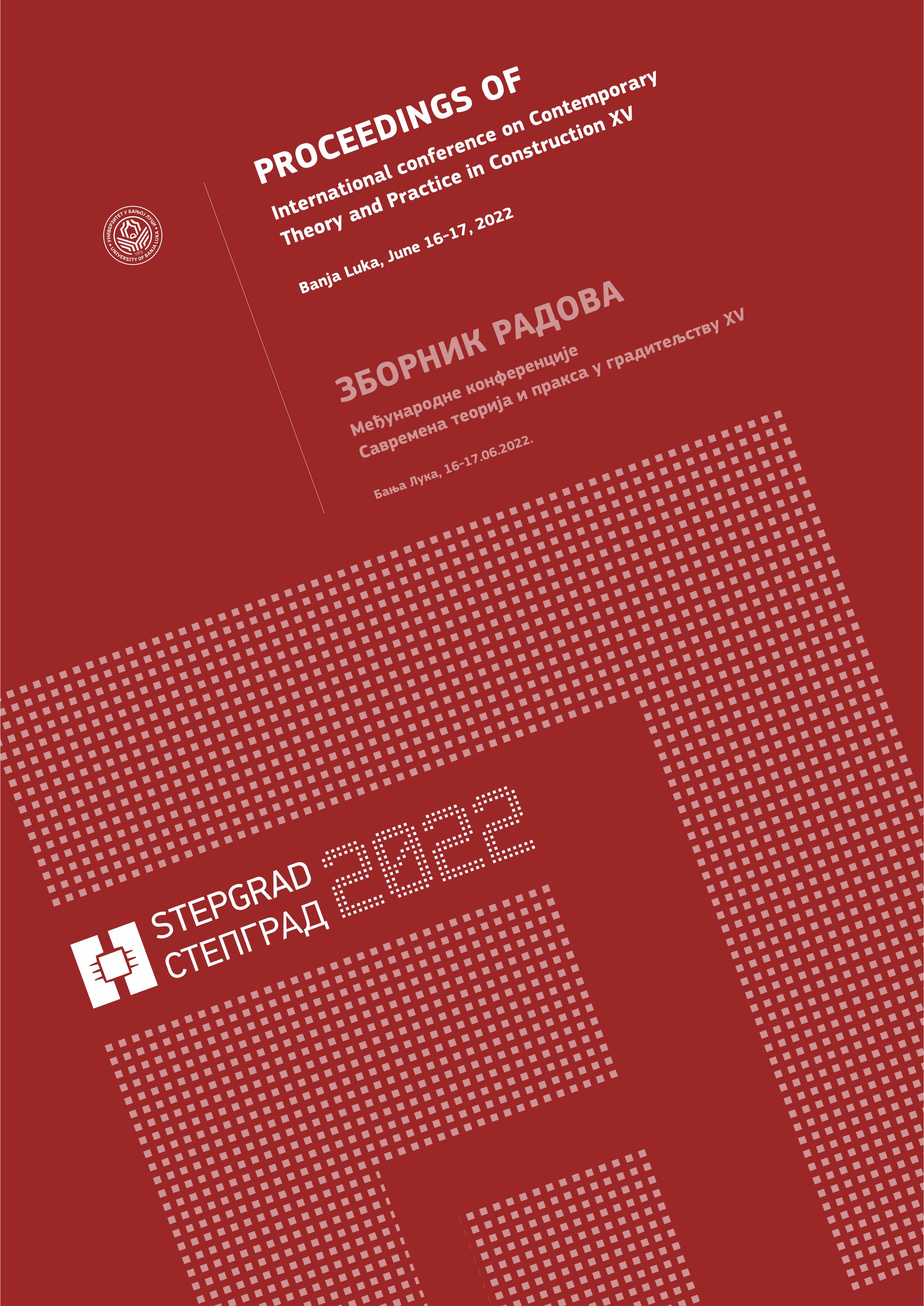SPATIAL ARRANGEMENT OF MULTIFAMILY SOCIAL HOUSING – KEY CRITERIA RELEVANT FOR THE QUALITY OF HOUSING
DOI:
https://doi.org/10.7251/STP2215409PAbstract
In order to ensure the sustainability of social housing, the living conditions should meet basic biological needs [demands], but they should also have a stimulating effect on the psycho-social development of the users. The focus of the research is on identification and definition of the physical and spatial criteria that are essential for the quality and sustainability of this type of housing in order to distinguish the dwelling layouts [housing models] that can be considered appropriate for the specific requirements of social housing,
References
Čolić Damjanović V. M. (2015), Unapređenje modela socijalnog stanovanja u Beogradu u okviru novih paradigmi planiranja i projektovanja, doktorska disertacija, Arhitektonski fakultet, Univerzitet u Beogradu
Marušić, D., (1999) Sveska 1-10, Arhitektonski fakultet Beograd
Newman О. (1996), Creating Defensible Space, Institute for Community Design Analysis, U.S. Department of Housing and Urban Development, Office of Policy Development and Research
UN, (2006), Uputstva o socijalnom stanovanju-Principi i primeri, Ujedinjene Nacije, Ekonomska komisija za Evropu, Ženeva
Levitt D, Levitt B. (2010), The housing design handbook, Routledge, Taylor & Francis Group
Milić V. (2006), Urbanistički aspekti socijalnog stanovanja, Arhitektonki fakultet, Univerzitet u Beogradu
Ilić D. (1983), Stan i porodica, Gradina
Stoiljković B. (2015), Primena koncepta individualizacije u stambenoj arhitekturi u kontekstu unapređenja višeporodičnog stanovanja, doktorska disertacija, Građevinsko-argitektonski fakultet, Univerzitet u Nišu
Bramley G, Power S. (2009), Urban form and social sustainability: the role of density and housing type, Environment and Planning B: Planning and Design, 36, pp.30–48.
Dinić Branković M. ,MitkovićP., (2019), Urbana funkcija stanovanje, Univerzitet u Nišu – Građevinsko-arhitektonski fakultet
Gehl J. (1987), Life between buildings: using public space, New York: Van Nostrand Reinhold Comapny
Bridge G. (2002), The neighbourhood and social networks, CNR Paper 4. ESRC Centre for Neighbourhood Research, Bristol
Henning C, Lieberg M. (1996), Strong ties or weak ties? Neighbourhood networks in a new perspective, Scandinavian Housing & Planning Research, 13, pp.3–26.
Cattell N, Dines N, Gesler W, Curtis S. (2008), Mingling, observing, and lingering: Everyday public spaces and their implications for well-being and social relations, Health Place, 14, pp.544–561
Reeves P. (2005), Introduction to social housing, Elsevir
Rabeneck A, Sheppard D, Town P. (1974), Housing: Flexibility/Adaptability? Architectural Design, 44, pp.76–90.
Groák S. (1992), The Idea Of Building: Thought And Action In The Design And Production Of Buildings, London: E&FN
Jovanović G, Keković A. (2008), Fleksibilna organizacija sklopa sprata i prostora stana kod zgrada dubokog trakta, Zbornik radova Drugog internacionalnog naučnog skupa "Građevinarstvo-nauka i praksa" Žabljak 03-07. mart 2008.godine, Univerzitet Crne Gore – Građevinski fakultet, Knjiga 1, pp.579–585.
Živković M, Jovanović G. (2012), A method of evaluating the degree of housing unit flexibility in multi-family housing, Facta Univeritatis. Series: Architecture and Civil Engineering, 10(1), pp.17–32.

